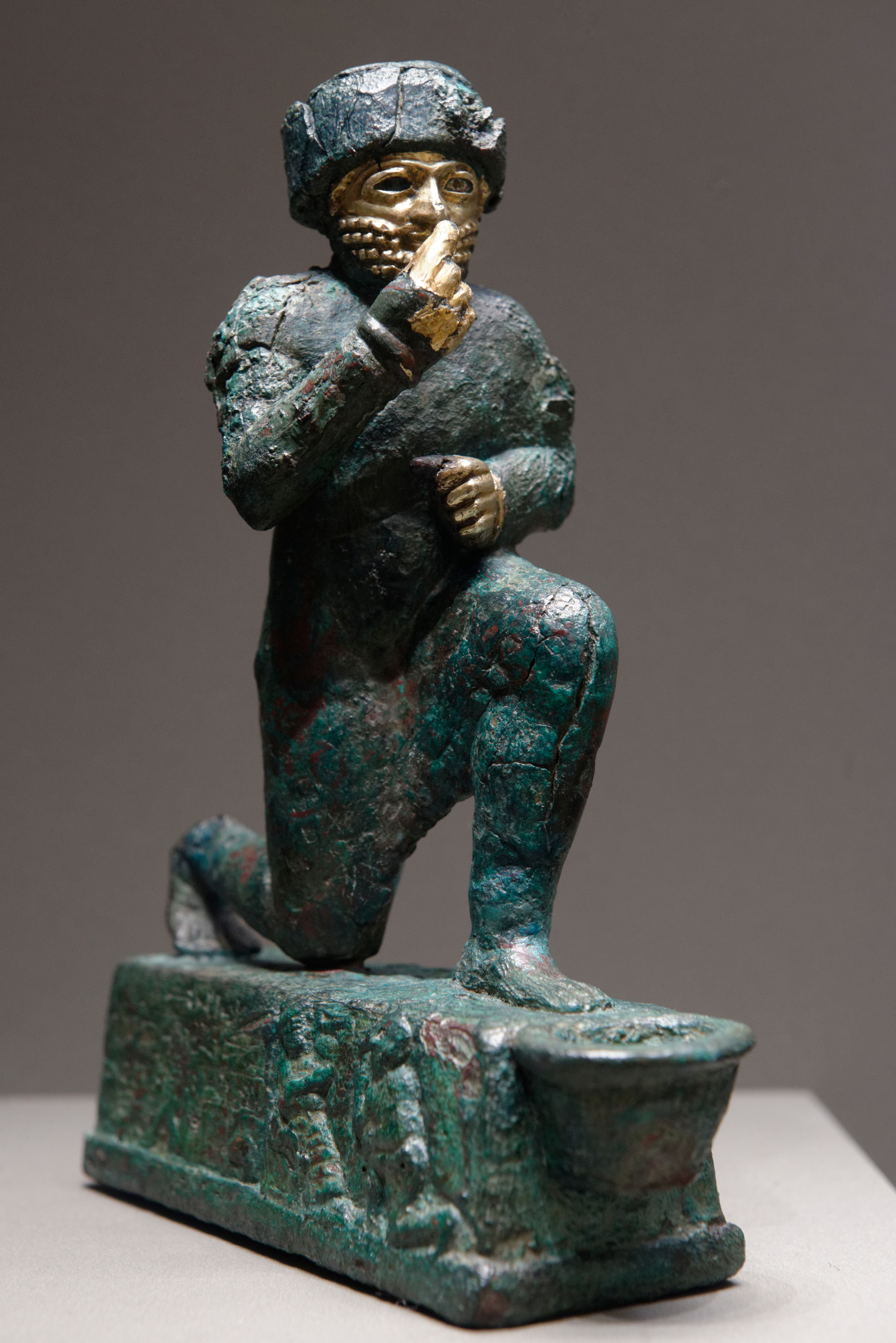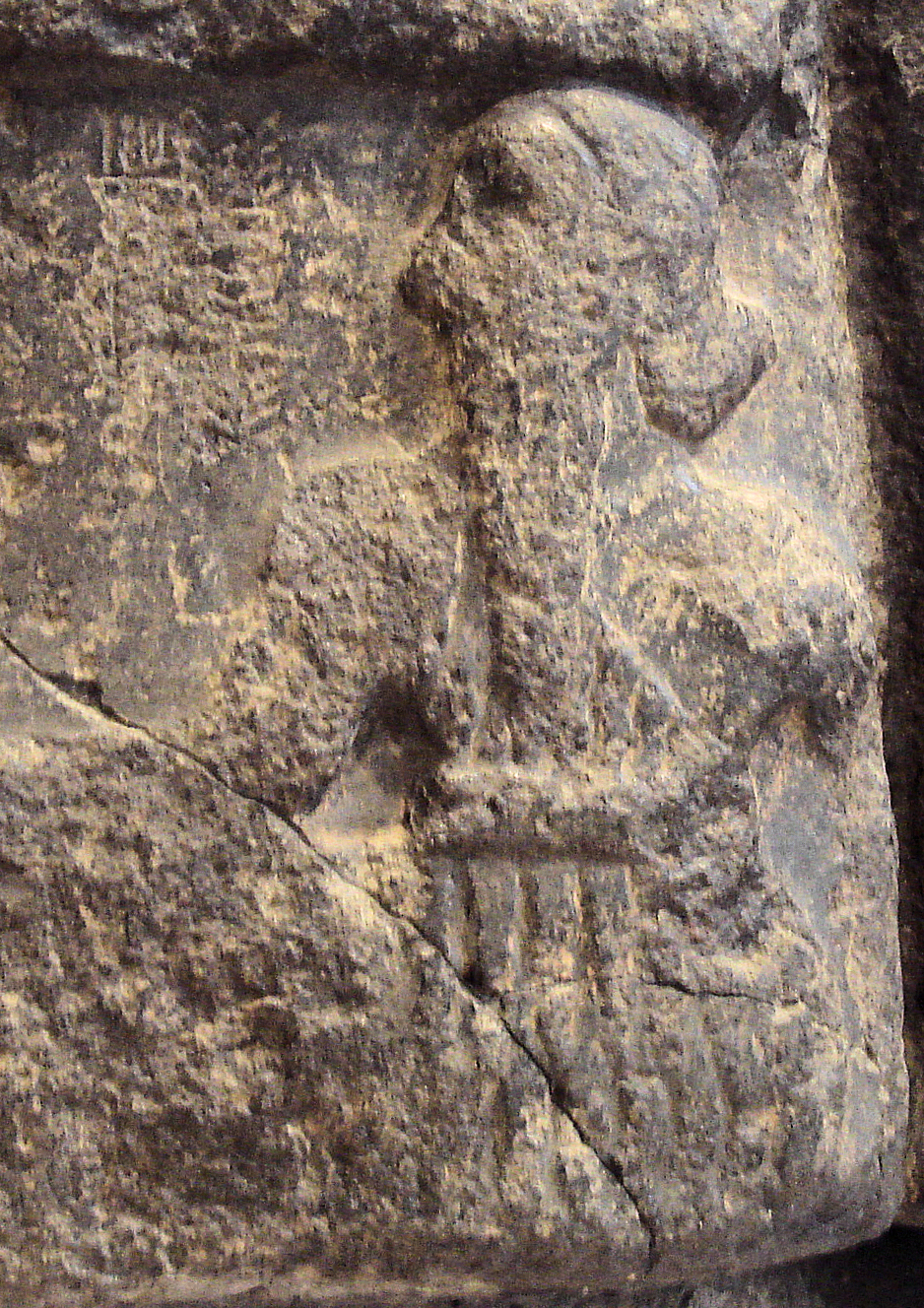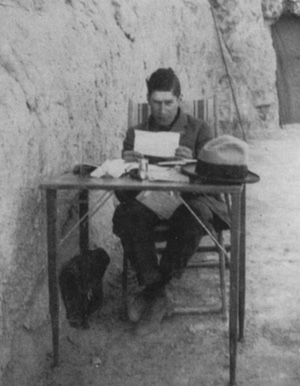|
Diyala River
The Diyala (Arabic: ; ; Farsi: , ) is a river and tributary of the Tigris. It is formed by the confluence of the Sirwan and Tanjaro rivers in Darbandikhan Dam in the Sulaymaniyah Governorate of Northern Iraq. It covers a total distance of . Course It rises near Hamadan, in the Zagros Mountains of Iran. It then descends through the mountains, where for some 32 km it forms the border between the two countries. It finally flows into the Tigris below Baghdad. Navigation of the upper reaches of the Diyala is not possible because of its narrow defiles, but the river's valley provides an important trade route between Iran and Iraq. The river flows southwest of the Hamrin Mountains. Name Its Aramaic origin is "Diyalas" and in Kurdish it is called "Sirwan", meaning 'roaring sea' or 'shouting river'. In the early Islamic period, the lower course of the river formed part of the Nahrawan Canal. The Diyala Governorate in Iraq is named after the river. It may be the ancient Tornas ... [...More Info...] [...Related Items...] OR: [Wikipedia] [Google] [Baidu] |
Tigris River
The Tigris ( ; see below) is the eastern of the two great rivers that define Mesopotamia, the other being the Euphrates. The river flows south from the mountains of the Armenian Highlands through the Syrian and Arabian Deserts, before merging with the Euphrates and reaching to the Persian Gulf. The Tigris passes through historical cities like Mosul, Tikrit, Samarra, and Baghdad. It is also home to archaeological sites and ancient religious communities, including the Mandaeans, who use it for baptism. In ancient times, the Tigris nurtured the Assyrian Empire, with remnants like the relief of King Tiglath-Pileser. Today, the Tigris faces modern threats from geopolitical instability, dam projects, poor water management, and climate change, leading to concerns about its sustainability. Efforts to protect and preserve the river's legacy are ongoing, with local archaeologists and activists working to safeguard its future. Etymology The Ancient Greek form () is an alternativ ... [...More Info...] [...Related Items...] OR: [Wikipedia] [Google] [Baidu] |
Hamrin Mountains
The Hamrin Mountains (, ) are a small mountain ridge in northeast Iraq. The westernmost ripple of the Zagros Mountains, the Hamrin mountains extend from the Diyala Governorate bordering Iran, northwest to the Tigris river, crossing northern Saladin Governorate and southern Kirkuk Governorate. Historically the Hamrin mountains were called Barima, Bārimā and Birimma (). Ibn Khaldun, a 14th century historian called the Hamrin mountains range, the "Kurdish mountains". That is because these mountains are situated in the south of Kirkuk and Kurds Kurds (), or the Kurdish people, are an Iranian peoples, Iranic ethnic group from West Asia. They are indigenous to Kurdistan, which is a geographic region spanning southeastern Turkey, northwestern Iran, northern Iraq, and northeastern Syri ... lived there, so, Ibn Khaldun said, "the range Hamrin mountains is a place whose people are Kurdish."Ibn khaldun, ''al muqadima'' (The introduction), Beirut, p 74 References External link ... [...More Info...] [...Related Items...] OR: [Wikipedia] [Google] [Baidu] |
Larsa
Larsa (, read ''Larsamki''), also referred to as Larancha/Laranchon (Gk. Λαραγχων) by Berossus, Berossos and connected with the biblical Arioch, Ellasar, was an important city-state of ancient Sumer, the center of the Cult (religious practice), cult of the sun god Utu with his temple E-babbar. It lies some southeast of Uruk in Iraq's Dhi Qar Governorate, near the east bank of the Shatt-en-Nil canal at the site of the modern settlement Tell as-Senkereh or Sankarah. Larsa is thought to be the source of a number of tablets involving Babylonian mathematics, including the Plimpton 322 tablet that contains patterns of Pythagorean triples. History Larsa is found (as UD.UNUG) on Proto-cuneiform lexical lists from the Uruk 4 period (late 4th millennium BC). A few Proto-cuneiform tablets were also found there. Three Neolithic clay tokens, from a slightly early period, were also found at Larsa. For most of its history Larsa was primarily a cult site for the god Utu. In the early p ... [...More Info...] [...Related Items...] OR: [Wikipedia] [Google] [Baidu] |
Susa
Susa ( ) was an ancient city in the lower Zagros Mountains about east of the Tigris, between the Karkheh River, Karkheh and Dez River, Dez Rivers in Iran. One of the most important cities of the Ancient Near East, Susa served as the capital of Elam and the winter capital of the Achaemenid Empire, and remained a strategic centre during the Parthian Empire, Parthian and Sasanian Empire, Sasanian periods. The site currently consists of three archaeological mounds, covering an area of around . The city of Shush, Iran, Shush is located on the site of ancient Susa. Name The name Susa is of Elamiate origin and has appeared in many languages: *Middle *Middle and Neo- *Neo-Elamite language, Elamite and Achaemenid Empire, Achaemenid *Achaemenid Empire, Achaemenid * * * * or *New * Literary references Susa was one of the most important cities of the Ancient Near East. In Historiography, historic literature, Susa appears in the very earliest Sumerian records: for exa ... [...More Info...] [...Related Items...] OR: [Wikipedia] [Google] [Baidu] |
Luristan
Lorestan province () is one of the Provinces of Iran, 31 provinces of Iran. Its capital is the city of Khorramabad. Lorestan is in the Western Iran, western part of the country in the Zagros Mountains and covers an area of 28,392 km2. In 2014 it was placed in Regions of Iran, Region 4. Lorestan is located close to the border with Iraq. Situated in a scenic valley surrounded by mountains, Lorestan lies approximately 100 kilometers (about 62 miles) east of the Iran–Iraq border, Iraqi border. Etymology The name ''Lorestan'' means "land of the Lurs." History The ancient history of Lorestan is closely intertwined with the rest of the Ancient Near East. In the 3rd and 4th millennium BC, migrant tribes settled down in the mountainous area of the Zagros Mountains. The Kassites, an ancient people who spoke neither an Indo-European languages, Indo-European nor a Semitic languages, Semitic language, originated in Lorestān. They would control Babylonia after the fall of t ... [...More Info...] [...Related Items...] OR: [Wikipedia] [Google] [Baidu] |
Haematite
Hematite (), also spelled as haematite, is a common iron oxide compound with the formula, Fe2O3 and is widely found in rocks and soils. Hematite crystals belong to the rhombohedral lattice system which is designated the alpha polymorph of . It has the same crystal structure as corundum () and ilmenite (). With this it forms a complete solid solution at temperatures above . Hematite occurs naturally in black to steel or silver-gray, brown to reddish-brown, or red colors. It is mined as an important ore mineral of iron. It is electrically conductive. Hematite varieties include ''kidney ore'', ''martite'' ( pseudomorphs after magnetite), ''iron rose'' and ''specularite'' ( specular hematite). While these forms vary, they all have a rust-red streak. Hematite is not only harder than pure iron, but also much more brittle. The term ''kidney ore'' may be broadly used to describe botryoidal, mammillary, or reniform hematite. Maghemite is a polymorph of hematite (γ-) with the sa ... [...More Info...] [...Related Items...] OR: [Wikipedia] [Google] [Baidu] |
Painted Ceramic Jar, 2800-2600 BCE, Khafajah, Sumer EDII-III
Paint is a material or mixture that, when applied to a solid material and allowed to dry, adds a film-like layer. As art, this is used to create an image or images known as a painting. Paint can be made in many colors and types. Most paints are either oil-based or water-based, and each has distinct characteristics. Primitive forms of paint were used tens of thousands of years ago in cave paintings. Clean-up solvents are also different for water-based paint than oil-based paint. Water-based paints and oil-based paints will cure differently based on the outside ambient temperature of the object being painted (such as a house). History Paint was used in some of the earliest known human artworks. Some cave paintings drawn with red or yellow ochre, hematite, manganese oxide, and charcoal may have been made by early ''Homo sapiens'' as long as 40,000 years ago. Paint may be even older. In 2003 and 2004, South African archeologists reported finds in Blombos Cave of a 100,000-year-ol ... [...More Info...] [...Related Items...] OR: [Wikipedia] [Google] [Baidu] |
Tell Asmar Hoard
The Tell Asmar Hoard ( Early Dynastic I-II, ) are a collection of twelve statues unearthed in 1933 at Eshnunna (modern Tell Asmar) in the Diyala Governorate of Iraq. Despite subsequent finds at this site and others throughout the greater Mesopotamian area, they remain the definitive example of the abstract style of Early Dynastic temple sculpture (2900 BC–2350 BC). Discovery In the late 1920s antique dealers in Baghdad were acquiring large quantities of unusual, high quality artifacts from the desert east of the Diyala River, just north of its confluence with the Tigris.Karen L. Wilson, ''Excavations in the Diyala Region'', i''Art Of The First Cities: The Third Millennium B.C. from the Mediterranean to the Indus'' ed. Joan Aruz (New York and London: The Metropolitan Museum of Art, Yale University Press, 2003), 58. In 1929 the Oriental Institute at the University of Chicago obtained a concession to excavate the area. James Henry Breasted (1865–1935), the founder of the i ... [...More Info...] [...Related Items...] OR: [Wikipedia] [Google] [Baidu] |
Eshnunna
Eshnunna (also Esnunak) (modern Tell Asmar in Diyala Governorate, Iraq) was an ancient Sumerian (and later Akkadian) city and city-state in central Mesopotamia 12.6 miles northwest of Tell Agrab and 15 miles northwest of Tell Ishchali. Although situated in the Diyala Valley northwest of Sumer proper, the city nonetheless belonged securely within the Sumerian cultural milieu. It is sometimes, in very early archaeological papers, called Ashnunnak or Tupliaš. The tutelary deity of the city was Tishpak (Tišpak) though other gods, including Sin, Adad, and Inanna of Kiti ( Kitītum) were also worshiped there. The personal goddesses of the rulers were Belet-Šuḫnir and Belet-Terraban. History Early Bronze Inhabited since the Jemdet Nasr period, around 3000 BC, Eshnunna was a major city during the Early Dynastic period of Mesopotamia. It is known, from cuneiform records and excavations, that the city was occupied in the Akkadian period though its extent was noticeably le ... [...More Info...] [...Related Items...] OR: [Wikipedia] [Google] [Baidu] |
Akkadian Empire
The Akkadian Empire () was the first known empire, succeeding the long-lived city-states of Sumer. Centered on the city of Akkad (city), Akkad ( or ) and its surrounding region, the empire united Akkadian language, Akkadian and Sumerian language, Sumerian speakers under one rule and exercised significant influence across Mesopotamia, the Levant, and Anatolia, sending military expeditions as far south as Dilmun and Magan (civilization), Magan (modern United Arab Emirates, Saudi Arabia, Bahrain, Qatar and Oman) in the Arabian Peninsula.Mish, Frederick C., Editor in Chief. "Akkad" ''iarchive:webstersninthne000merr, Webster's Ninth New Collegiate Dictionary''. ninth ed. Springfield, MA: Merriam-Webster 1985. ). The Akkadian Empire reached its political peak between the 24th and 22nd centuries BC, following the conquests by its founder Sargon of Akkad. Under Sargon and his successors, the Akkadian language was briefly imposed on neighboring conquered states such as Elam and Guti ... [...More Info...] [...Related Items...] OR: [Wikipedia] [Google] [Baidu] |
Early Dynastic Period (Mesopotamia)
The Early Dynastic Period (abbreviated ED Period or ED) is an archaeological culture in Mesopotamia (modern-day Iraq) that is generally dated to and was preceded by the Uruk and Jemdet Nasr periods. It saw the development of writing and the formation of the first cities and states. The ED itself was characterized by the existence of multiple city-states: small states with a relatively simple structure that developed and solidified over time. This development ultimately led, directly after this period, to broad Mesopotamian unification under the rule of Sargon, the first monarch of the Akkadian Empire. Despite their political fragmentation, the ED city-states shared a relatively homogeneous material culture. Sumerian cities such as Uruk, Ur, Lagash, Umma, and Nippur located in Lower Mesopotamia were very powerful and influential. To the north and west stretched states centered on cities such as Kish, Mari, Nagar, and Ebla. The study of Central and Lower Mesopotamia has l ... [...More Info...] [...Related Items...] OR: [Wikipedia] [Google] [Baidu] |
Jemdet Nasr
Jemdet Nasr () (also Jamdat Nasr and Jemdat Nasr) is a Tell (archaeology), tell or settlement mound in Babil Governorate, Iraq that is best known as the eponymous type site for the Jemdet Nasr period (c. 3100–2900 BC), under an alternate periodization system termed the Uruk III period, and was one of the oldest Sumerian cities. It is adjacent to the much larger Neo-Babylonian and Sassanian site of Tell Barguthiat (also Tell Bargouthiat) to the northeast. The site was first excavated in 1926 by Stephen Herbert Langdon, Stephen Langdon, who found Proto-Cuneiform clay tablets in a large mudbrick building thought to be the ancient administrative centre of the site. A second season took place in 1928, but this season was very poorly recorded. Subsequent excavations in the 1980s under British archaeologist Roger Matthews (archaeologist), Roger Matthews were, among other things, undertaken to relocate the building excavated by Langdon. These excavations have shown that the site was also ... [...More Info...] [...Related Items...] OR: [Wikipedia] [Google] [Baidu] |







